What is a school?
A school is an educational or institutional building that is designed to provide structured learning to students. Education is the fundamental and most important element of a modern society because it enables us to identify things, understand them, and take different outcomes from them. It serves as a place that creates a healthy and supportive environment where students learn and receive knowledge in a variety of subjects from the teachers.
Schools are of different types: pre-school, primary, secondary/middle, higher, and others. That typically offers education in different grades and consists of a curriculum that includes subjects like science, mathematics, social studies, language, arts, geography, history, physical education, etc. These are taught by expert teachers, fostering critical thinking, creativity, and personal growth in the students.
Types of School
A school can be categorized into various types based on the educational level, organizational level, instructional methods, and others. But mainly, it is categorized as:
- Preschool: This is an early school that typically focuses on the basic skills, fun, creativity, and socialization of kids aged 3 to 5. Offers interactive classes for pre-nursery and nursery kids.
- Primary/Junior: In this school, fundamental subjects or skills like reading, writing, language, mathematics, and science are taught to the students. This school belongs to students in the age group of 5 to 10 and consists of classes from the first standard to the fourth or fifth standard.
- Middle or Secondary School: This type of school focuses on students in the age group of 10 to 13, and they are offered a more diverse curriculum. It consists of grades from the fifth standard to the seventh or eighth standard.
- Secondary or Higher School: This type of school offers education at a higher level and in specialized subjects, which helps in shaping our future. This type of school belongs to students in the age group of 13 to 17 and offers classes from the ninth to the 12th grade. Secondary school can be further divided into two levels: level one (9th to 10th standard) and level two (11th to 12th standard).
Read below for detailed information about school design standards and other important things…
School design Standards
Site selection and Planning
- While selecting the site of the school buildings, the following points should be kept in mind:
- Easy accessibility of the school site from residential areas;
- The site should be away from heavy traffic roads, rivers, ponds, railway tracks, etc.
- The site should be away from high-tension lines;
- The land should not be made-up ground unless precautions have been taken for stabilization;
- The site should ensure good natural drainage;
- The site should preferably be in a quiet place away from places generating noise and pollution, such as cinemas, factories, and shopping centers. (Source: IS Code: 8827)
Minimum Setback
In the absence of local building byelaws the minimum setbacks of the building from the boundaries shall be as follows:
- Front set-back: 15000 mm (50 Ft.)
- Side set-back: 6000 mm (20 Ft.)
Overall Area of the School
- The gross area of school buildings comprises a teaching area and a non-teaching area.
- As a general rule for school design standards, schools should aim for a 60:40 split between the teaching area and the non-teaching area, although existing site constraints can sometimes make this difficult.
- In nursery provision, small mainstream schools, and all special schools, this is likely to be closer to a 50:50 split. (Source: Architect’s Handbook)
- The built-up area of the school and the overall area of the plot should be calculated according to the provisions of classrooms, teaching spaces, administrative space, circulation area, activity areas, and building regulations. However, as a rough guide, the following values may be taken when planning a school:
| S. No. | For Primary School (per Students area) | For Secondary + Higher Secondary School (per Students area) | For Primary + Secondary + Higher Secondary School (per Students area) | |
| Built-up area (on all floors) per students place: | ||||
| 01. | For a school having four sections per class | 1.8 m2 | 3.4 m2 | 2.6 m2 |
| 02. | For a school having two sections per school | 1.8 m2 | 4.6 m2 | 3.2 m2 |
| (The area per student will be decrease when number per sections per class increase or decrease) | ||||
| 03. | Plot area other than play fields | 2 to 3 times the built-up area (on all floors) depending upon the number of storeys (for all school types) | ||
| 04. | Play field or Play ground | 4000 m2 | 15000 m2 | 15000+ m2 |
{To read detailed area breakdowns, population served, student strength, and others for different categories of schools, Read the URDPFI Guidelines (Page:- 357–358). For hilly areas, read page 377}
Entrance, Access or Approach
To read the main article on this topic click here: Entrance
- Where possible, the main entrance and reception should overlook the primary pedestrian and vehicular approaches to the school and be clearly visible to those arriving. (Source: Architect’s Handbook)
- All the entrances and exits should be designed in such a way that they can serve all classes of people and don’t become barriers for anyone.
- The entrance to the school should be on some level and can be accessed either by stairs or ramp.
- If there are more than three steps, then provide handrails on both sides of the stairs, as it provides safety to the user and saves from accidents.
- If it is accessed by ramp, then design the slope of the ramp at a maximum of 1:12 and a minimum of 1:20. Recommended 1:16 for better accessibility and space constraints.
Recommended orientation of the School
The following climatological factors which influence the optimum orientation of a building shall be taken into account :
- Solar radiation and temperature
- Clouds and rains
- Humidity
- Prevailing winds. (Source: IS Code: 2440)
Key spaces and school design standards
Classrooms
- The basic unit of a school is the classroom and all the standards should be followed for it to design a perfect school. The classroom, apart from satisfying the minimum requirements of space, fittings, and furniture, shall be designed to meet adequate functional and environmental requirements. The size of a classroom will depend on the following:
- Anthropometric dimensions of children and their space requirements,
- Dimensions, arrangements of children’s furniture and equipment and their incidence;
- Number of students to be accommodated;
- Types of activities to be carried out;
- Different seating arrangements essential for those activities.
- Aesthetic considerations and others.
- The number of classrooms in a school and the number of sections per class should depend upon the size and level of school and the efficiency of spaces.
- The classroom should be designed for the following number of student places:
- Nursery:- 20 to 25 students.
- Primary/Higher Secondary:- 40 students. (Source: IS Code: 8827)
- The chalkboards or blackboards should be painted matte black or pale green. In the former case, the reflection factor in use should be of the order of 15 %, and in the latter, around 25–30 %.
- The minimum clear distance between the edge of the chalkboard and the first row of desks when the chalkboard and front are in use shall be 2400 mm (8 ft.). (Source: IS Code: 7942)
- The distance between the blackboard and the pupil workplaces at the back should not exceed 9000 mm (30 Ft.). (Source: Neufert)
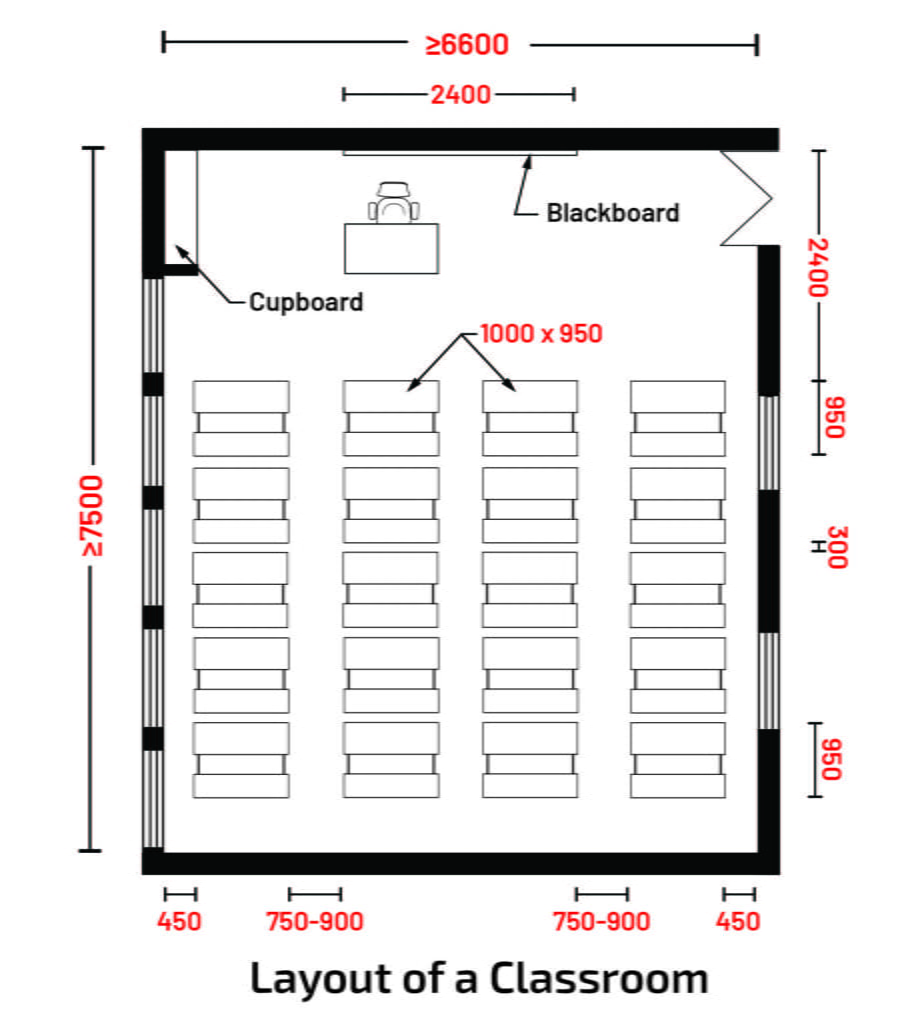
Area of Classroom
Area of classroom should be calculated on the basis of area needed per student place as given in Below Table.
| S. No. | Categories | No. of Students | Area of Classroom per students |
| 01. | Pre-School | 20/25 | 2.0 m2 |
| 02. | Primary/Junior | ||
| 1. With Furniture | 40 | 1.11 m2 | |
| 2. With Squatting | 40 | 0.74 m2 | |
| 03. | Secondary/ Higher Secondary | 40 | 1.26 m2 |
Classroom furniture and Fittings
| S. No. | Fittings or Furniture | No. of Units | Area | Remarks |
| 01. | Chalkboard or Blackboard | 1 | 1200 x 2400 mm | Its base should be 800 mm above the floor or platform level. The location of the chalkboards should be on the walls adjacent to the window wall and placed such that the mid-vertical line of the board lies between one-half and two-thirds the depth of the room. This is to ensure that the glare from windows in the students’ seat area is minimized. |
| 02. | Cupboard | 1 | 1.5 m2 | Its depth should not be less than 450 mm. It would serve as space for the storage of display maps, materials, etc. |
| 03. | Pin board | 1-2 | There should be one or more near the chalkboard area or on the side walls to display maps, charts, student work, performance, etc. | |
| 04. | Teacher Desk and Sitting | 1 each | 0.75 m2 | There should be a sitting area for teachers to rest, work, check, and provide counseling. |
| 05. | Student’s Bench or Desk | 1 for each students | Benches or desks are provided to students to sit and take classes. It should be arranged in a good manner so that there is no waste of space. | |
| 06. | Student’s Locker | 1 for each students | A locker for each student may be provided in case such an arrangement in students benches or desks is not possible. | |
| 07. | Electrical Appliances | |||
| 1. Fans | 3-4 | 1200 mm Diameter | It should be installed in such a way that it provides air to every student. | |
| 2. Light | 4-6 | It should be installed in such a way that it illuminates the classrooms whenever artificial lighting is required. |
Laboratories and Other Spaces
Science Laboratory
The size of the science laboratories depends on the following:
- Number of students and their space requirements.
- Flexibility of arrangements and multi-use of spaces
- Usefulness of the wall area and
- Interrelationship of auxiliary spaces.
- The science laboratories should be designed for 24 seats.
- The science theory rooms related to laboratories should be designed on the basis of norms for a classroom for higher secondary classes.
- The social science room, art room, crafts room, and activity room may be designed for 40 students, but the area required for these rooms should be more than the area for the ordinary classroom for 40 students in order to accommodate the teaching equipment, models, and activities pertaining to particular subjects. (Source: IS Code: 8827)
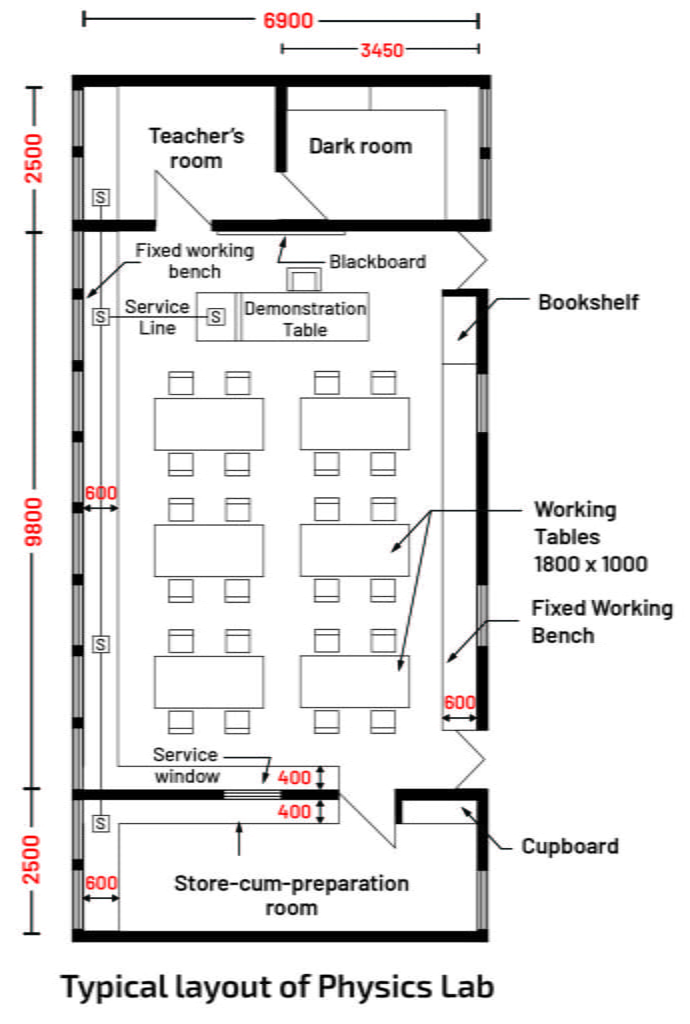
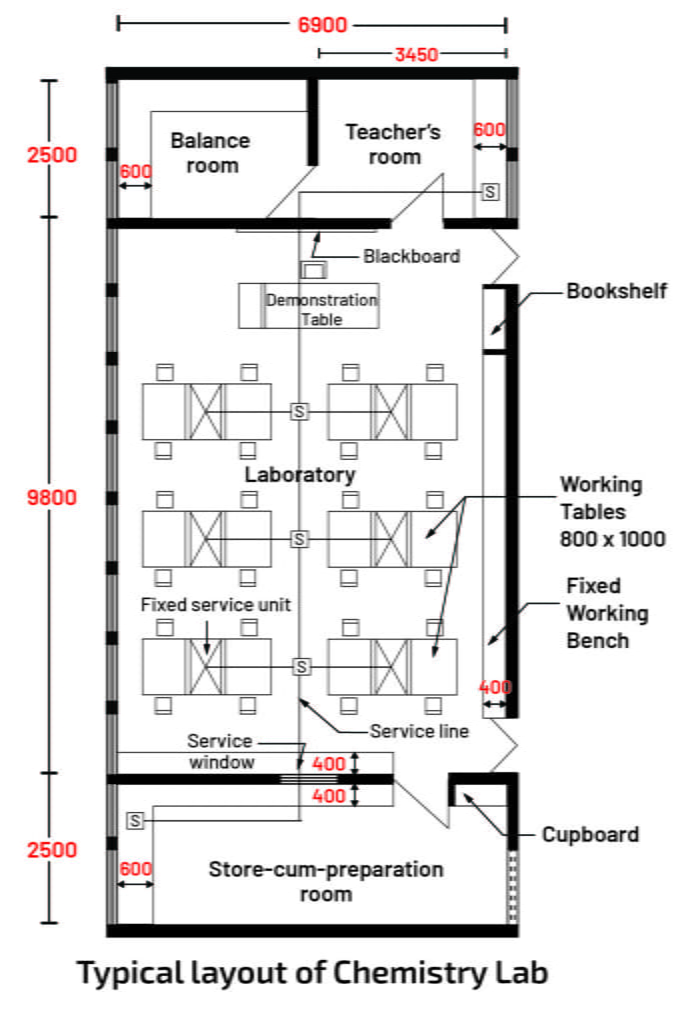
Teaching Spaces other than Classrooms
| S. No. | Rooms | Distribution of Areas | Total Area |
| 01. | Physics Laboratory | 96 m2 | |
| a. Laboratory | 65 m2 | ||
| b. Store-cum preparation room | 15 m2 | ||
| c. Teacher’s space/room | 8 m2 | ||
| d. Dark Room | 8 m2 | ||
| 02. | Chemistry Laboratory | 96 m2 | |
| a. Laboratory | 65 m2 | ||
| b. Store-cum preparation room | 15 m2 | ||
| c. Teacher’s space/room | 8 m2 | ||
| d. Balance Room | 8 m2 | ||
| 03. | Biology Laboratory | 96 m2 | |
| a. Laboratory | 65 m2 | ||
| b. Store-cum preparation room | 15 m2 | ||
| c. Teacher’s space/room | 8 m2 | ||
| d. Museum | 8 m2 | ||
| 04. | Domestic Science Laboratory | 89 m2 | |
| a. Laboratory | 65 m2 | ||
| b. Store | 8 m2 | ||
| c. Teacher’s space/room | 8 m2 | ||
| d. Museum | 8 m2 | ||
| 05. | Social Science Room | 65 m2 | 65 m2 |
| 06. | Art Room | 65 m2 | 65 m2 |
| 07. | Crafts Room | 65 m2 | 65 m2 |
| 08. | Activity Room | 65 m2 | 65 m2 |
| 09. | Science theory Room | 50 m2 | 50 m2 |
(Source: IS Code: 8827)
Administrative spaces
- For Pre-School and Primary School
- An area of about 10 m2 may be provided for a room for headmistress/headmaster of the school.
- Another area of 10 m2 may be provided for general Storage.
- For Secondary and Higher Secondary Schools
- Principal’s Room – The size of the room for the principal of the school may be governed by the space needed for parents’ meetings, waiting space, and toilets.
- Vice-Principals Room – Generally the control of examination records at the school is looked after by the vice principal. His room may be decided, taking these factors into account. In case there is no vice principal of the school, the area for the above function may be provided suitably.
- General Office – Apart from the working space for general office staff, it should provide space for fee collection, student’s contact, parent’s contact, etc.
- Teaching Staff Area – Staff common room which may contain facilities for lockers for all teachers, office tables and chairs, and a separate toilet facility for staff should be provided in all secondary and higher secondary schools. (Source: IS Code: 8827)
- A staff room should be designed away from the classrooms so that it is not disturbed by the noise coming from the classrooms.
Library design standards for school
- The location of the library with respect to other rooms in the school building shall be such that it is conveniently accessible from the main entrance and should be centrally located with respect to the teaching area.
- The library block should provide a calm and quiet atmosphere for the readers.
- The longer axis of the library should run east to west, with some adjustments depending on the latitude of the place. The entrance should be provided from a verandah or lobby.
- One entry and one exit shall be provided to ensure the safety of books.
- A small room for the repair of damaged books will be provided in the library.
- Space Requirements
- Audio visual storage room: 45 m2
- Workshop: 45 m2
- Discussion room: 2 m2 per students
- Library classroom: 75 m2 at the rate of 1.25 m2 for 10 students.
- Reading Room
Area per student (Seating)
- Elementary: 1 m2 Min.
- Secondary: 1.5 m2 Min
- Book Storage
- Elementary 30-35 (volumes per meter run of shelving)
- Secondary 25-30 (volumes per meter run of shelving)
- Natural lighting, when provided, should be free from glare, and the glazed area should be equal to the minimum of 15 % to 20 % of the floor area of the reading room concerned.
- If windows are used on one side of the room, the wall opposite the glazed wall should not be at a distance of more than 8000 mm (26.5 ft).
- Bilateral lighting should be provided in case the width of the room exceeds 8000 mm (26.5 Ft.). (Source: IS Code: 8338)
(To read more about library design standards for school in depth, you should prefer IS Code: 1553)
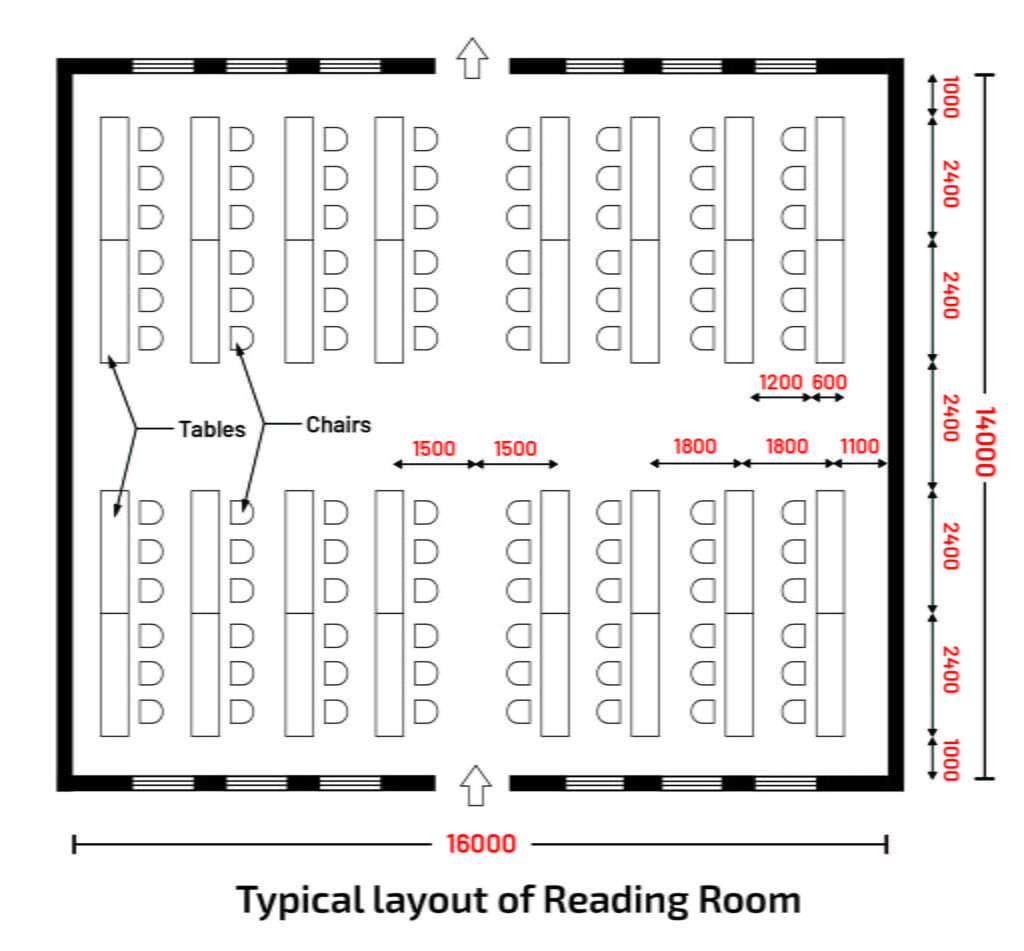
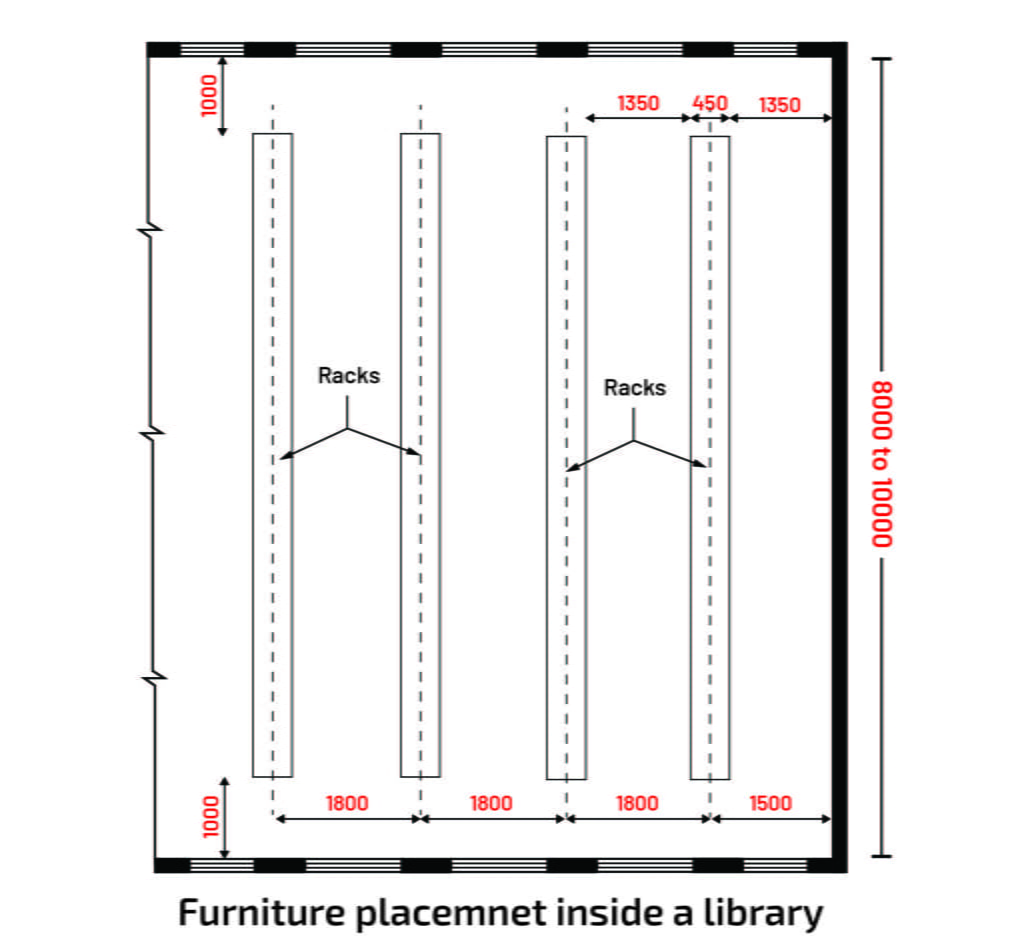
Auditorium design standards for school
To read the main article on this topic click here: Auditorium
- Not every school requires an auditorium, generally there we prefer an assembly area where all the cultural events, prayers, and other important gatherings takes place.
- But there should be a space where these kind on stuff happen in organized manner.
- The size of an auditorium should be fixed in relation to the number of people required to be seated there.
- The hall’s floor area, including gangways (but excluding the stage), should be computed at 0.6 to 0.9 m2 per person.
- The average height for small halls ranges from 6000 to 7500 mm (20 to 25 Ft.) for large halls. (Source: IS Code: 2526 )
- Auditorium standard area per person or seats should be between 1.5 to 2.0 m2.
- Auditorium dimensions and layout: Dimensions can be challenging, but a decent rule of thumb is to size the auditorium based on the style of performance and the number of audience members you intend to seat:
- 200 seats: 270 m2 (2900 ft2)
- 150 seats: 190 m2 (2000 ft2)
- 75 seats: 125 m2 (1350 ft2) [1]
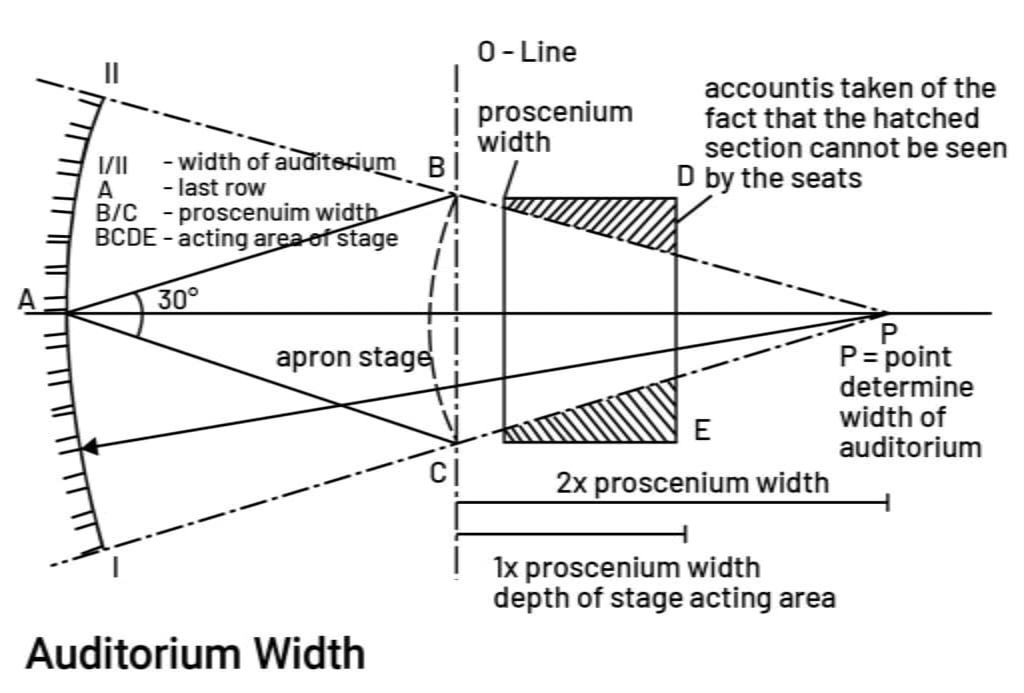
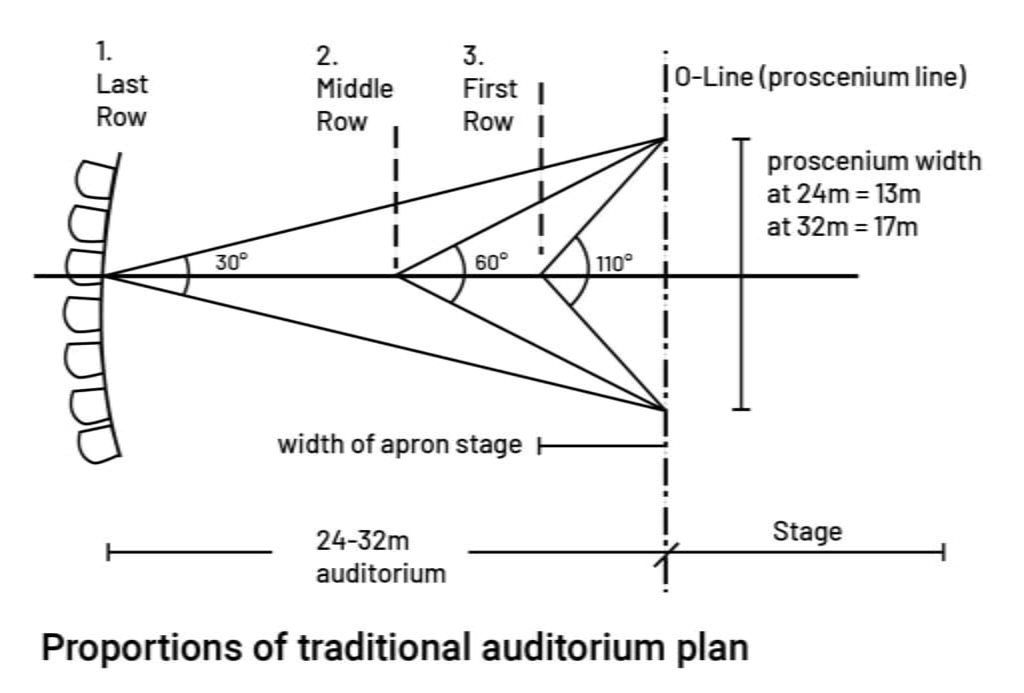
Indoor areas for various students’ activities
| S. No. | Room | Area | Remarks |
| 01. | Common Room | 0.1 m2 per students (Min 25 m2 , Max 100 m2 ) | Boys common room should contain arrangements for sitting or squatting and it may be combined or be a part of canteen itself. Girls common room should contain in addition a bench or a coach for lying down. |
| 02. | Canteen | 0.1 m2 per students (Min 25 m2 , Max 100 m2 ) | It is good to have a canteen in school premises. |
| 03. | NCC/ACC/Scout/Guide | One room for each, 11 m2 | – |
| 04. | Medical Room | 20 to 30 m2 | It should contain facilities such as a table, a chair, an examination bed, a medicine chest and a wash basin. |
| 05. | Book/Stationery Shop | 30 to 50 m2 | – |
| 06. | Library | 0.1 m2 per students (Min 50 m2 , Max 150 m2 ) | Library in a school fosters a love of reading, enhances academic achievement, and provides a conducive environment for research and learning. |
| 07. | Student’s Club and House offices | 30 to 50 | – |
| 08. | Physical Education and Teaching Room | 45 m2 | – |
| 09. | Toilets | 0.2 m2 per students | More recommended 1 Water closets per 8 students 1 Urinals per 8 students 1 wash basin per 8 to 10 students |
| 10. | Multipurpose Hall | 0.65 m2 per students for 50% of the strength (excluding stages) | – |
(Source: IS Code: 8338)
Circulation design standards for school
To read the main article on this topic click here: Circulation
- Circulation areas such as corridors, entrance halls, staircases, etc. in the school buildings with double-loaded and single-loaded corridors shall not be more than 18% and 24% of the total covered area of the building, respectively.
- The width of the corridor for single loading should be a minimum 1800 mm (6 Ft.), and for double loading it should be a minimum 2400 mm (8 ft.). (Width can be increased as per the design, but it should not be below this.) (Source: IS Code: 8338)
Staircase design standards for school
To read the main article on this topic click here: Staircase
- The width of one fight of staircase should be 2000 mm (80 inches).
- The interior staircase shall be constructed of non-combustible materials throughout.
- The minimum tread shall be 300 mm (12 inches). The treads shall be constructed and maintained in a manner to prevent slipping.
- The maximum height of the riser shall be 150 mm (6 inches). One flight of the stair should be limited to 10 steps to 12 steps per flight. (Source: IS Code: 8338)
Fire Staircase
- Handrails shall be provided with a minimum height of 900 mm (36 inches) from the center of the tread.
- The minimum headroom in a passage under the landing of a staircase and under the staircase shall be 2200 mm (88 inches).
- For buildings above 15000 mm (50 Ft.) in height fire escape stairs shall be provided subject to the following conditions:
- Fire escapes shall not be taken into account in calculating the evacuation time of a building.
- All fire escapes shall be directly connected to the ground floor.
- Entrance to the fire escape shall be separate and remote from the internal staircase.
- Fire escape shall be constructed of non-combustible materials. (Source: IS Code: 8338)
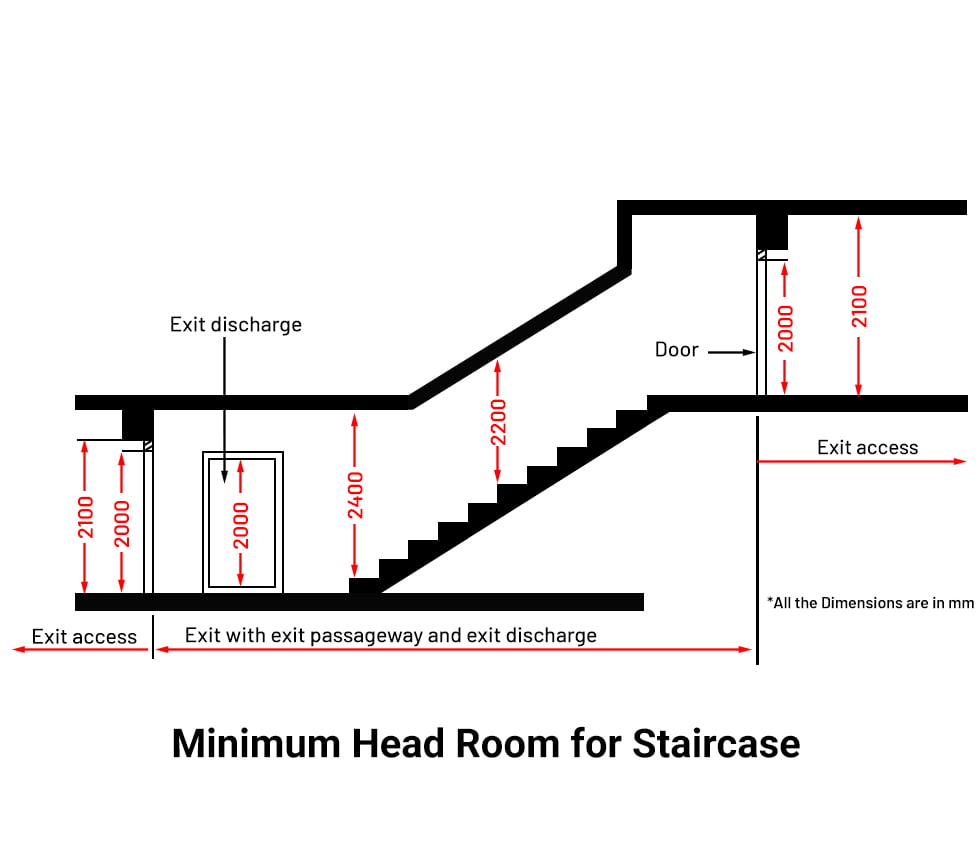
Exit Route design standards for school
- All exits should be designed to remain unobstructed and clear.
- Lifts and escalators should not be considered exits during an escape.
- Exits and their routes should be well lit, clearly marked, and have signs guiding students to the appropriate floor or rescue area.
- Exits should be arranged so they can be reached without passing through another occupied unit. They can be either horizontal or vertical, including doorways, corridors, internal or external staircases, ramps, verandahs, and terraces that provide access to the street or the roof of a building.
- An exit may also be a horizontal passage leading to an adjoining building on the same level.
- Exits should be positioned so that the distance from an exit to the most remote point on the floor, measured along the path of travel, does not exceed 30,000 mm (100 ft.), except where sprinklers are installed throughout a building, in which case the maximum travel distance to an exit may be increased by 50 %.
- The capacity of exits, including doors and stairways, indicating the number of persons they can accommodate, should be on the external walls of buildings and open directly to the exterior, an interior open space, or any open place of safety.
- Exit doorways should be no less than 1000 mm (40 inches) wide and 2000 mm (80 inches) high. Doorways for bathrooms, water closets, etc., should be at least 750 mm (30 inches) wide.
- Exit doorways should open outwards, away from the room, without obstructing the travel path along any exit. No door, when opened, should reduce the required stairway or landing width to less than 900 mm (36 inches); overhead or sliding doors should not be installed. (Source: IS Code: 8827)
Playing Ground area for Schools
It is desirable to make provisions for play fields for all categories of schools. The following areas should be adequate for playing games like cricket, football, hockey, and other Indian or International sports:
- Pre School: 1000 m2
- Primary School: 4000 m2
- Secondary /Higher Secondary School: 15000 m2 (Source: IS Code: 8827)
To download free Sports CAD Blocks of any sports, click here:
Parking design standards for school
To read the main article on this topic click here: Parking
- Parking areas for the following should be provided when designing a school buildings:
- Cycles: 1.1 m2 per cycle
- Scooters: 3 m2 per scooter
- Cars: 25 m2 per car
- Buses: 60 m2 per buses (Source: IS Code: 8827)
- The ECS per 100 m2 should be 0.25 – 0.75 for school building. (Source: Modern Building Bye Laws, Chapter-3)
- Parking Bay Sizes for different vehicles are:-
- Bicycle:- 700 x 1800 mm (1.4 x 6 Ft.)
- Two-Wheeler:- 1000 x 2300 mm (3.4 x 7.8 Ft.)
- Car:- 2500 x 5000 mm (8.4 x 16.8 Ft.)
- Mini Bus:- 3750 x 7500 (12.5 x 25 Ft.)
- Bus :- 14000 x 3000 mm (46.8 x 10 Ft.) (Source: Indian Road Congress)
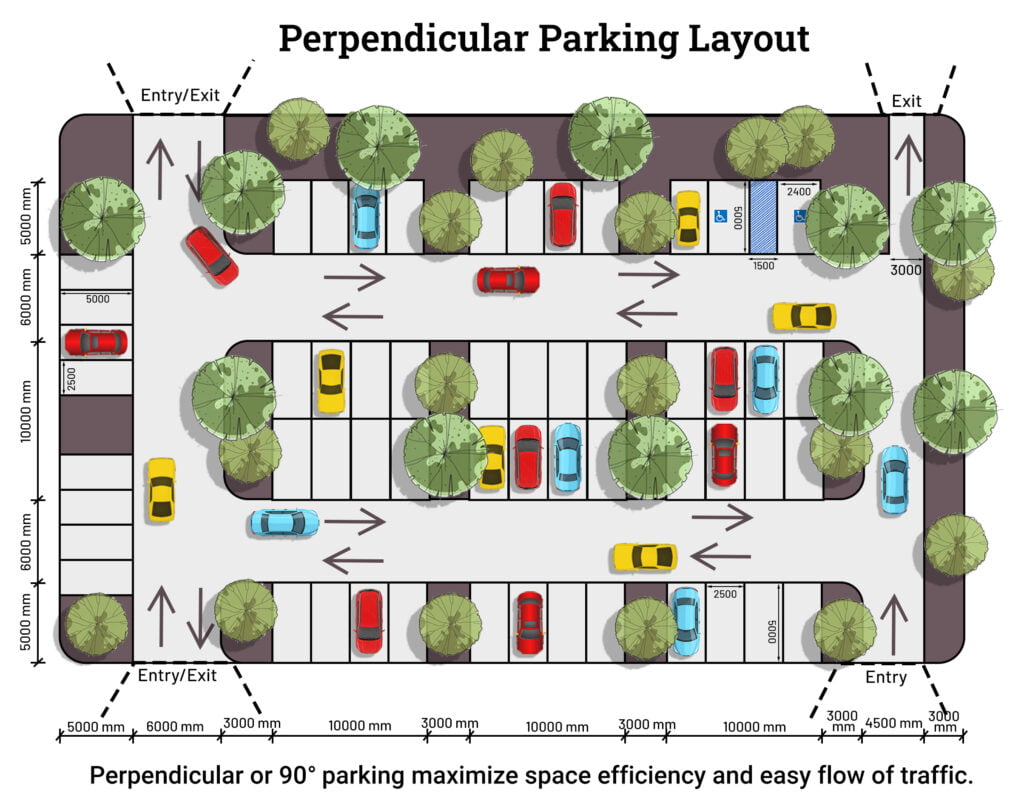
Design Considerations and standards for school
- The height of the classroom should not be less than 3000 mm (10 ft.) measured at any point from the surface of the floor to the lowest point of the ceiling. The minimum headroom, such as under the bottom of beams, fans, and lights, shall be 2600 mm (104 inches) measured vertically under such a beam, fan, or light.
- The proportion of the breadth (minimum dimension.) to the length (maximum dimension) of the classroom should not be more than 1:1.5.
- The sill height for classrooms with furniture arrangements should not be more than 800 mm (32 inches) measured from the finished floor level, and that for classrooms with squatting arrangements should not be more than 600 mm (24 inches).
- Rooms shall have, for the source of natural light and air, one or more openings, such as windows and fanlights, opening directly to the external walls or into an open verandah.
- The rows of tall or shady trees should be at right angles to the source of light in the building in order to avoid glare in the rooms. (Source: IS Code: 8827)
- For more natural light and air, try to orient classrooms at an angle so that you can have two external walls.
- Never design classrooms in between two corridors, as doing so doesn’t have any meaning, and it also seems weird.
- Never use angular walls; try to make them straight.
Best school designs for case studies
- Sangam Elementary School, Bhilwara, Rajasthan, Designed By SferBlu Architects,
- The Rajkumari Ratnavati Girl’s School, Jaisalmer, Rajasthan, Designed By Diana Kellogg Architects
- Swarnim International School, West Bengal, Kolkata, Designed By Abin Design Studio
- KLE Sanskruti School, Gokak, Karnataka, Designed By Shreyas Patil Architects
- The Rajasthan School, Ras, Rajasthan, Designed by Sanjay Puri Architects
- School for blind and visually impaired children, Gandhinagar, Gujarat, Designed by SEAlab
*Note: The dimensions written in feet, inches and mm are individual dimensions, not converted.

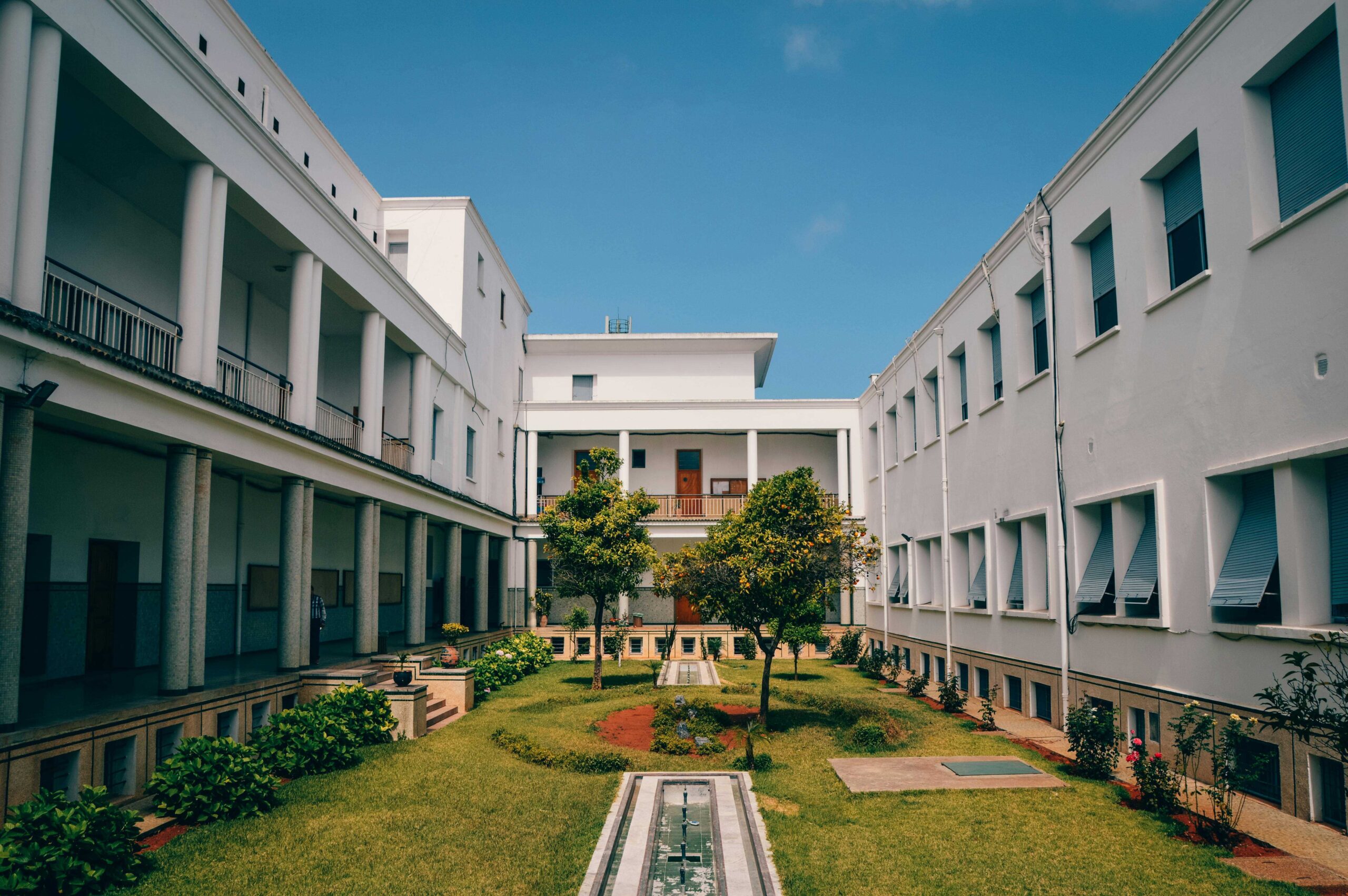

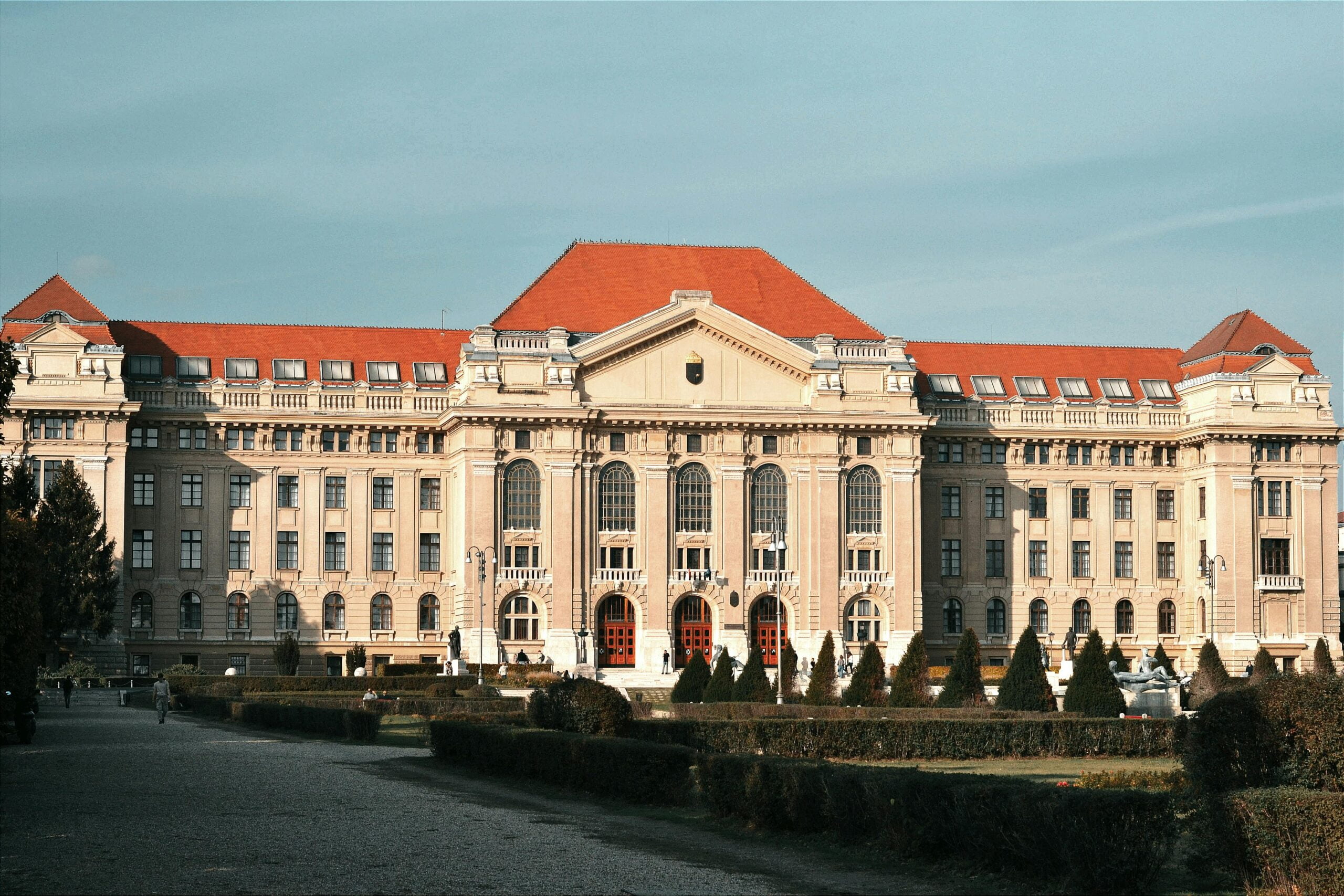
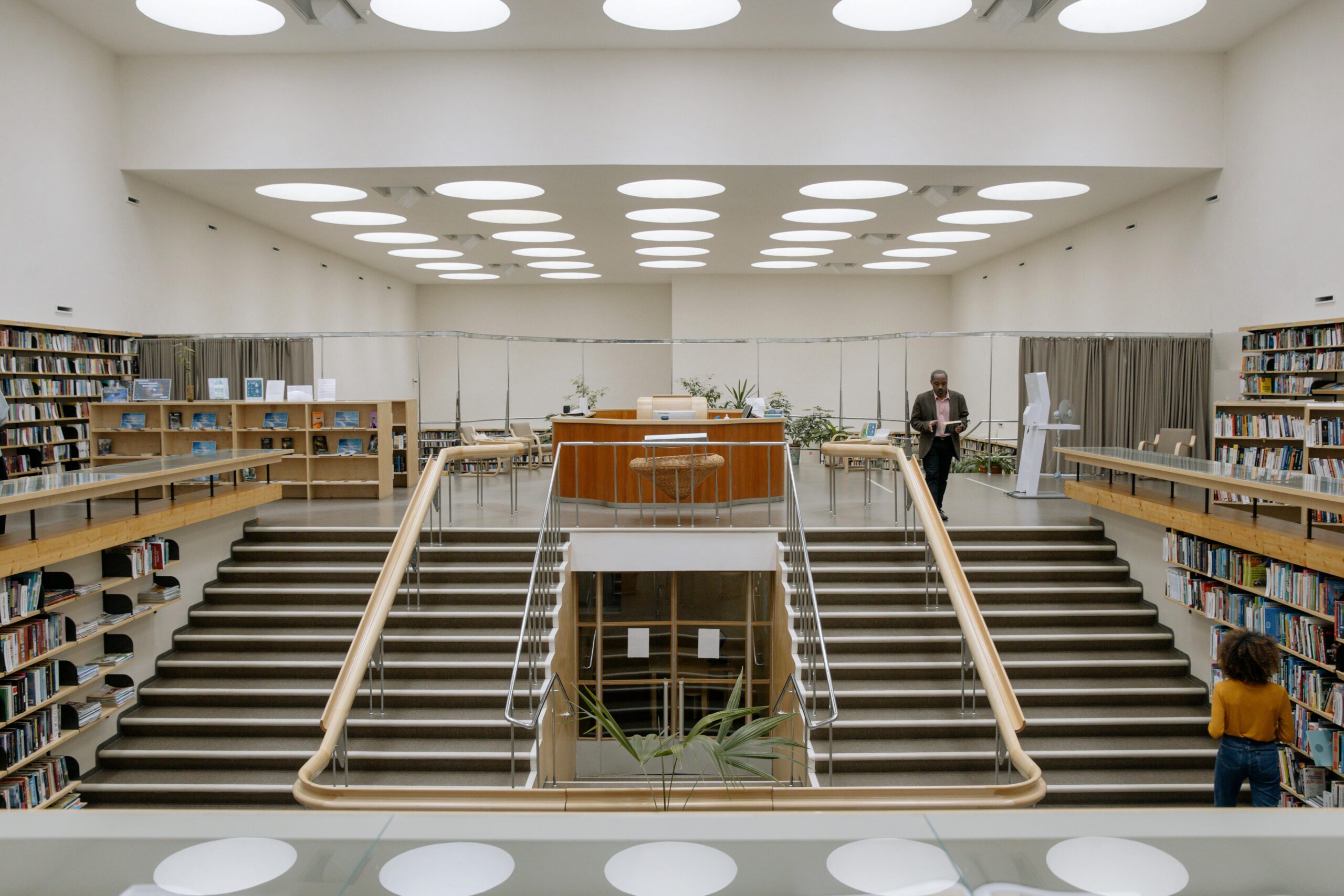
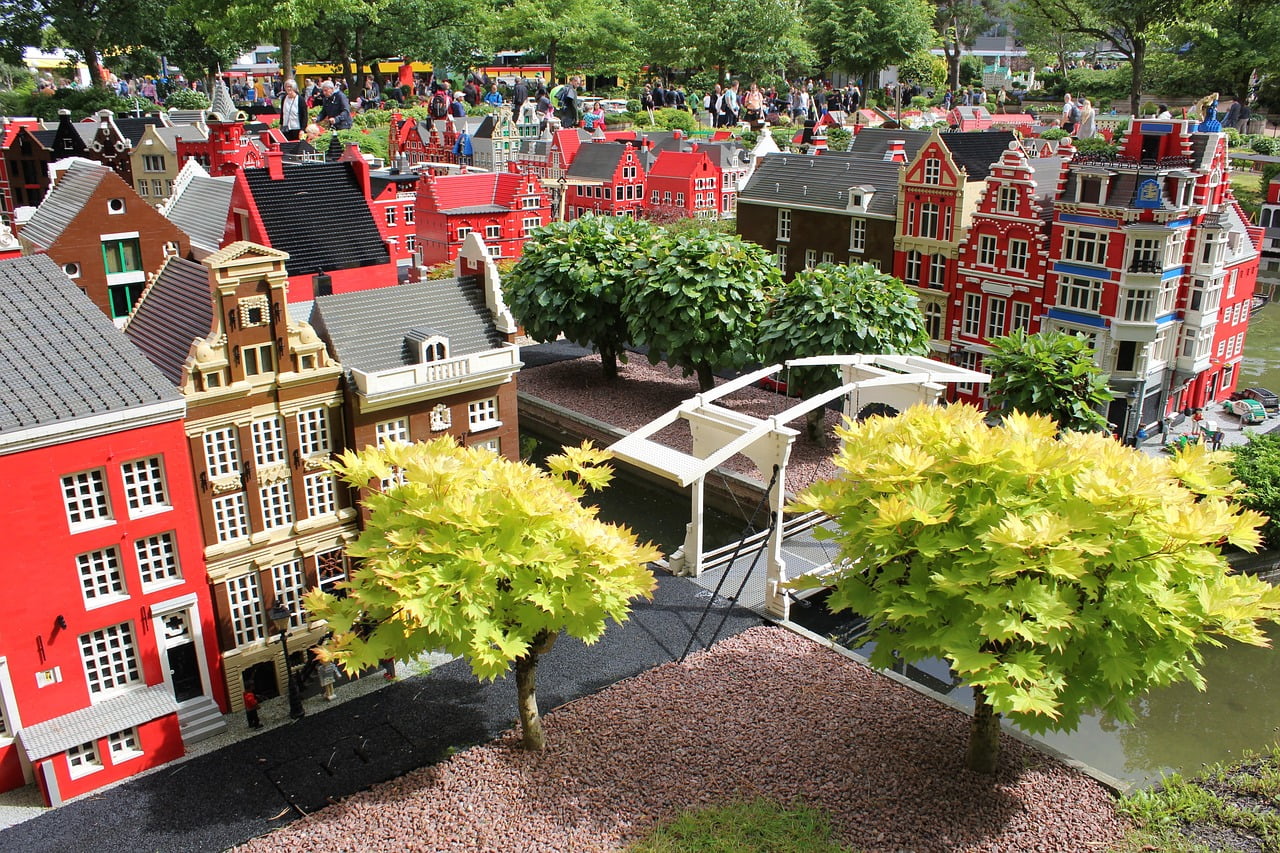

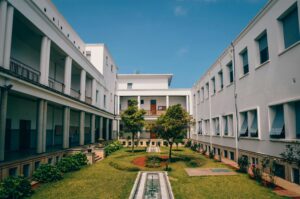

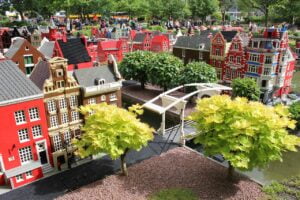

2 Responses
Thanks for such a wonderful Ideas
Glad it added value to your learning. Thanks